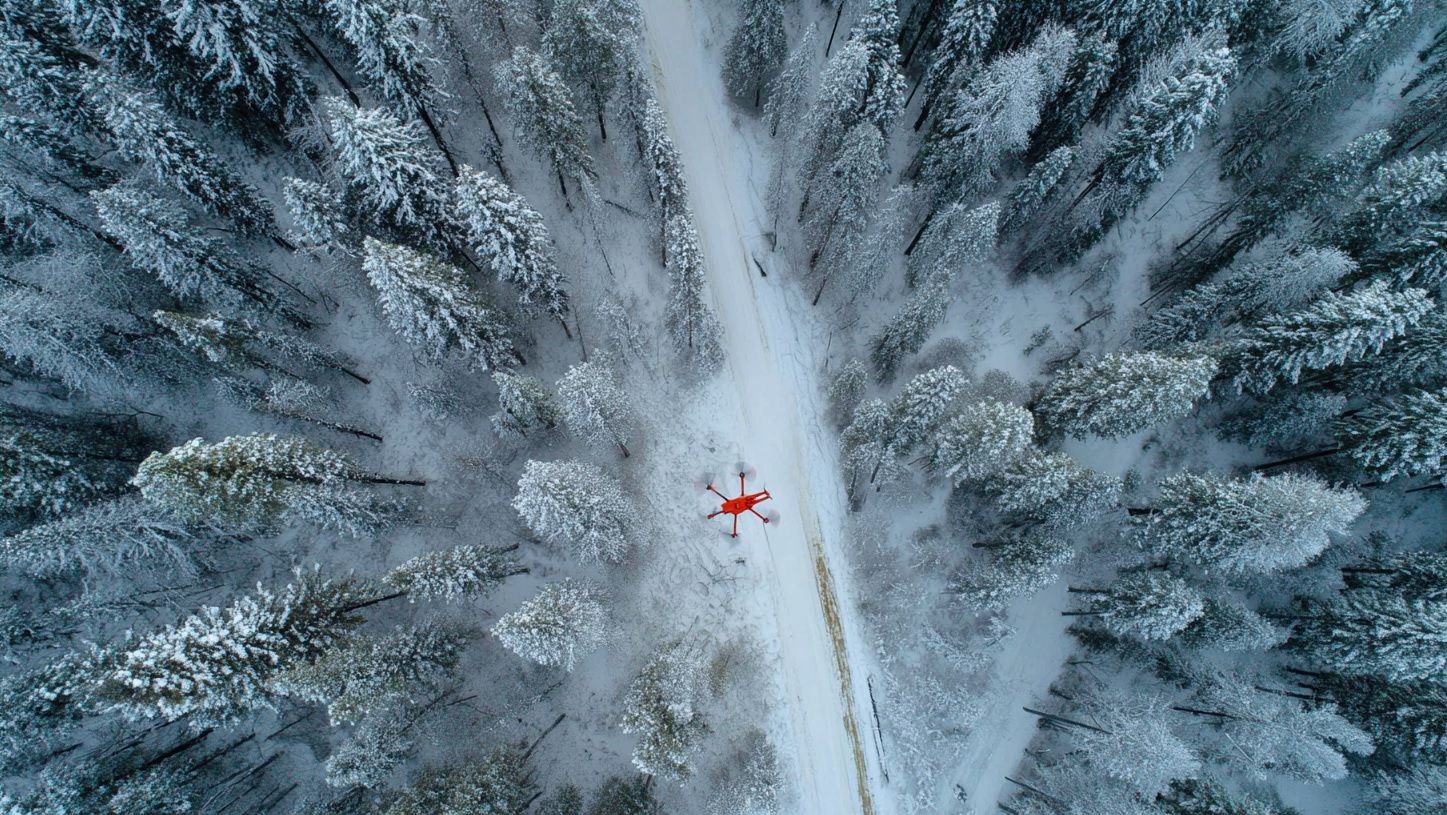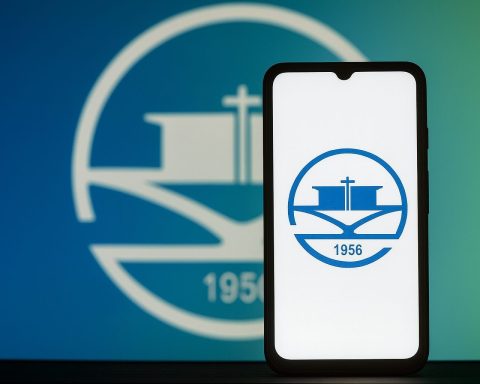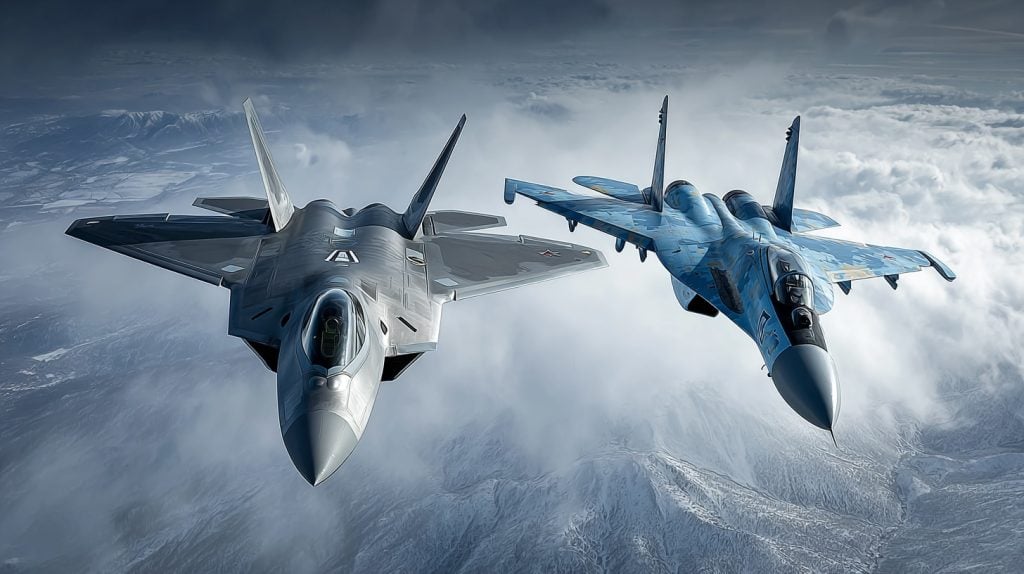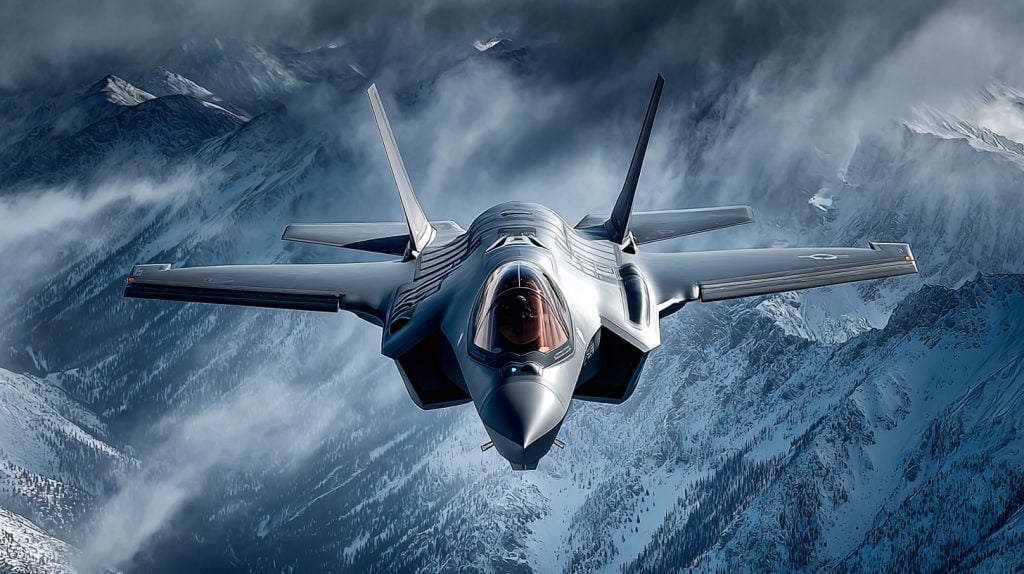- Transport Canada regulates drones under the Aeronautics Act and the Canadian Aviation Regulations, with Part IX of the CARs introduced in 2019 to set nationwide RPAS rules for drones from 250 g to 25 kg.
- Drones weighing under 250 g, often called microdrones, are largely exempt from licensing and registration, though pilots must still fly safely.
- Canada uses a risk-based Basic versus Advanced framework and applies the same safety rules to recreational and commercial flights, regardless of intent.
- Drones in the 250 g to 25 kg range must be registered with Transport Canada and pilots must hold a drone pilot certificate, with Basic eligibility at age 14 and Advanced at age 16.
- Drones over 25 kg or flights outside standard rules require a Special Flight Operations Certificate (SFOC); from 2024–2025 the rules add Level 1 Complex Operations BVLOS certification and permit some medium drones (25–150 kg) to fly in VLOS under standard rules.
- Maximum altitude is 122 m (400 ft) above ground, unless you have specific authorization such as an SFOC.
- Basic operations must stay at least 30 m (100 ft) away from bystanders, while Advanced operations may fly closer or over people only if using a drone rated for those operations and following extra rules.
- Drones must stay at least 5.6 km (3 nautical miles) from airports and 1.9 km (1 nautical mile) from heliports, with permission required for controlled airspace in some locations.
- National parks are No Drone Zones for recreational use, with fines up to 25,000 CAD, and many provincial parks impose separate permit requirements.
- Penalties include up to 1,000 CAD per minor infraction, up to 3,000 CAD per offense for serious violations, corporate fines up to 5,000 CAD or 15,000 CAD for more serious offenses, and possible criminal penalties up to 25,000 CAD or imprisonment.
Canada has some of the strictest drone regulations in the world, designed to keep the skies safe [1]. Under Canadian law, drones are considered “aircraft,” so drone pilots must follow many of the same safety rules that apply to manned aviation [2]. Whether you fly a drone recreationally or for business, it’s crucial to understand these laws to avoid hefty penalties and ensure public safety. This comprehensive report breaks down Canada’s drone laws – covering the regulatory framework, rules for hobbyists and commercial operators, licensing and registration, safety guidelines, penalties for violations, recent updates, and how federal rules interact with provincial or local restrictions.
Overview of Drone Regulation in Canada
Canada’s drone operations are regulated federally by Transport Canada under the Aeronautics Act and the Canadian Aviation Regulations (CARs). In 2019, Transport Canada introduced Part IX of the CARs, which set nationwide rules for drones (technically referred to as Remotely Piloted Aircraft Systems, or RPAS) [3]. These rules apply to all drones between 250 g and 25 kg, regardless of whether they’re flown for fun or commercial purposes [4] [5]. Drones under 250 g (sometimes called microdrones) are largely exempt from licensing and registration, though pilots must still fly them safely and not endanger people or aircraft [6] [7].
Transport Canada’s drone regulations focus on risk-based categories rather than the pilot’s intent. All drone pilots must adhere to general safety rules (like maximum altitudes and avoiding airports), and most drones over 250 g must be registered and operated by a certified drone pilot [8]. Enforcement of these rules is taken seriously – drones flown recklessly or illegally can lead to fines or even criminal charges. In short, Canada’s framework treats drones as part of the aviation system and requires operators to behave accordingly.
Recreational vs Commercial Use: One Set of Rules for All
Unlike some countries, Canadian regulations do not distinguish between recreational (hobby) drone use and commercial drone use in terms of the operating rules. Everyone must follow the same safety regulations, whether you’re flying for fun or for work [9]. The key factors that determine which rules apply are the drone’s weight and the nature of the operation – not the purpose of the flight [10].
In practical terms, this means hobbyists and professional drone operators are held to the same standards if they are flying similar drones in similar airspace. For example, a wedding photographer using a drone and a teenager flying a drone in their backyard both need to obey the Canadian Aviation Regulations. (Before 2019, commercial operators needed special permits in many cases, but the current rules have streamlined requirements into a single system.)
That said, Canadian rules categorize drone flights into Basic and Advanced operations based on risk factors like proximity to bystanders and airports. This replaces the old “recreational vs commercial” distinction. Recreational flyers typically fall under Basic operations if they keep their drones well away from people and airports, whereas flights that involve higher risk – such as near people, in cities, or in controlled airspace – are considered Advanced operations and require additional steps regardless of whether the pilot is paid or not [11] [12].
Licensing and Registration Requirements
All drones between 250 g and 25 kg must be registered with Transport Canada, and the pilot must obtain a drone pilot certificate before flying [13] [14]. Here are the key requirements for drone pilots in Canada:
- Drone Registration: If your drone weighs 250 g up to 25 kg, you must register it online with Transport Canada and mark the drone with the registration number before your first flight [15] [16]. (Drones under 250 g are exempt from registration, but remember that flying them recklessly is still illegal [17].) The registration process is simple and applies to both recreational and commercial drones.
- Pilot Certification (Licensing): To fly a drone 250 g–25 kg, you need a valid drone pilot certificate. Canada has two levels of certification:
- Pilot Certificate – Basic Operations: This is required for Basic category flights (low-risk scenarios). To get it, a person must be at least 14 years old, pass an online exam (Small Basic Exam), and they should carry their certificate when flying [18] [19].
- Pilot Certificate – Advanced Operations: This is needed for Advanced flights (higher-risk scenarios like flying in controlled airspace or over bystanders). To earn it, you must be at least 16 years old, pass a more rigorous online exam (Small Advanced), and complete an in-person flight review with a Transport Canada-approved reviewer [20] [21]. You also must only fly drones that meet specific safety design standards for advanced use (manufacturers of many popular drones have declared their models compliant for certain advanced operations) [22] [23]. The Advanced certificate allows you to do everything a Basic pilot can, plus those higher-risk operations. (If you hold an Advanced certificate, you don’t need a separate Basic certificate – the Advanced covers both [24].)
- Age and Supervision: As noted, the minimum age is 14 for a Basic certificate and 16 for Advanced [25]. Pilots younger than that (or anyone without a certificate) may still fly a drone only if they are directly supervised by a certified operator [26]. This enables youth programs or training under an experienced pilot. For certain complex operations like beyond-visual-line-of-sight (BVLOS), the minimum age will be 18 (more on upcoming BVLOS rules later) [27].
- Carrying Your Credentials: When flying, a pilot must have proof of their certification and the drone’s registration readily available – either printed or in electronic form [28] [29]. Authorities can ask to see these. Flying without a required certificate or with an unregistered drone is an offence that can lead to fines [30].
- Microdrones (<250 g): Drones weighing less than 250 grams do not require registration or a pilot certificate [31]. However, microdrone pilots must still fly responsibly. They cannot endanger people or other aircraft – reckless operation of any drone (even a tiny one) can lead to penalties under general safety rules [32]. Transport Canada advises micro drone users to follow the same best practices: keep the drone within sight, below 400 ft, away from airports, and avoid flying over people [33]. (As a new rule, explained later, even microdrones are not allowed at advertised events like concerts without special permission [34].)
- Large Drones (>25 kg): If you plan to fly a drone heavier than 25 kg, or to fly outside the normal rules (for example, above the 400 ft altitude limit), you must apply for a Special Flight Operations Certificate (SFOC) from Transport Canada before flying [35]. SFOCs are essentially special permits that impose case-by-case conditions. They’ve become less common for small drones under the new rules (since most typical operations are covered by Basic/Advanced certification), but they are still required for very large drones, for flights beyond allowed limits, or for certain special activities (like drone airshows, testing new equipment, etc.).
Rules for Safe Drone Operations
Once you have the necessary license and registration, you must follow strict rules whenever you take to the skies. These rules are in place to prevent accidents with other aircraft and to protect people on the ground. Key operational restrictions for flying drones in Canada include:
- Always Keep Your Drone in Sight: You must maintain visual line-of-sight (VLOS) with your drone at all times [36]. In practical terms, this means you (or a visual observer assisting you) should always be able to see the drone with your unaided eyes – not just via a video feed. Flying beyond your line-of-sight is prohibited unless you have a special certification/authorization for BVLOS (see Upcoming Changes section). You can fly at night, but only if your drone has lights that make it visible [37] [38].
- Maximum Altitude – 122 m (400 ft): Drones must not be flown higher than 122 metres (400 feet) above ground level [39]. This rule keeps drones well below most manned aircraft flight paths. The only exception is if you have specific authorization (e.g. an SFOC) to exceed 122 m [40] [41]. For reference, 122 m is roughly a 30-storey building height. Staying under this ceiling dramatically reduces the risk of a drone colliding with a passenger airplane.
- Distance from Bystanders (People):Do not fly close to or over people who are not involved in operating the drone. For Basic operations, you must keep at least 30 m (100 ft) horizontally away from any bystanders at all times [42]. Flying directly over people is not allowed in Basic operations [43]. Only pilots with an Advanced certificate may fly closer than 30 m or over people – and even then, only if using a drone rated safe for those operations and following additional rules (for example, “FPV racing drones” zipping over a crowd would not be allowed). In general, assume you should never fly over groups of people like beaches, sports events, or busy sidewalks without special permission [44].
- Stay Away from Airports and Aircraft: Drones cannot be flown anywhere near airports or heliports without proper clearance. As a rule of thumb, you must stay at least 5.6 km (3 nautical miles) away from any airport and 1.9 km (1 nautical mile) from any heliport when flying [45]. This essentially means no drone flights in the vicinity of airport runways or helicopter pads, unless you have an Advanced certificate and specific air traffic control permission for a controlled location. You also should avoid flying near any airplanes or helicopters you see – give all manned aircraft a wide berth [46]. It is illegal and extremely dangerous to fly a drone in controlled airspace (around airports) without authorization [47] [48].
- “No Drone Zones” and Sensitive Areas: Some places are outright no-go areas for drones. Never fly a drone near emergency response scenes – for example, around police operations, firefighting efforts, or forest fire zones [49] [50]. Drones can interfere with emergency helicopters and firefighting aircraft. It is also illegal to fly over an active forest fire area or within 5 NM (about 9 km) of one, as such airspace is typically restricted [51]. Avoid advertised events like outdoor concerts, festivals, parades, or sporting events – you need special permission to fly there [52]. Additionally, all national parks in Canada are “No Drone Zones” by default (recreational drone use is banned in national parks) [53]. Unless you have a permit from Parks Canada, leave your drone at home when visiting national parks – violators can face fines up to $25,000 under park regulations [54] [55]. Many provinces and cities likewise prohibit drones in certain local parks or downtown areas via bylaws (more on that below).
- Controlled vs Uncontrolled Airspace: If you are flying under Basic operations, you must stay in uncontrolled airspace only [56] [57]. Uncontrolled airspace generally refers to areas where Air Traffic Control (ATC) services are not provided to low-flying aircraft – essentially away from major airports and dense air traffic. If you want to fly in controlled airspace (near a class C, D, or E airport zone), that is an Advanced operation requiring you to obtain permission from NAV CANADA (the air navigation service) before the flight [58]. NAV CANADA has a system (like the NAV Drone app/portal) for drone pilots to request RPAS Flight Authorizations in controlled airspace [59]. Never wander into controlled airspace without clearance – it’s both illegal and dangerous. If flying near smaller aerodromes or heliports, even in uncontrolled air, keep your distance (the 3 NM/1 NM airport and heliport rules still apply).
- Other Safety Measures: Always inspect your drone before flight to ensure it’s in working order [60]. Follow your drone manufacturer’s instructions for operation and maintenance [61]. Do not fly if you are impaired by alcohol or drugs. Only one drone per pilot at a time (you can’t fly multiple drones simultaneously). Yield right-of-way to all manned aircraft – if an airplane or helicopter is nearby, your drone must stay well clear [62] [63]. Use common sense: avoid flying over private property without permission (to respect privacy and trespass laws), and don’t fly in adverse weather or high winds that could cause you to lose control. Essentially, do everything possible to minimize risks – you are responsible for every flight you conduct.
Penalties and Enforcement
Failure to follow Canada’s drone laws can result in serious penalties. Transport Canada and law enforcement agencies actively enforce these regulations, and they have the authority to issue fines or even pursue jail time for egregious offences [64]. Here’s an overview of potential penalties:
- Fines for Individuals: If you break drone rules as an individual operator, you could be fined up to $1,000 for each minor infraction such as flying without a valid pilot certificate or flying an unregistered/unmarked drone [65]. More serious violations – for example, flying in a prohibited area or in a way that endangers people or other aircraft – can lead to fines of up to $3,000 per offence for individuals [66]. These fine limits were recently increased (as of 2025) to deter risky drone behavior [67]. It’s worth noting that if you break multiple rules at once, you can be penalized for each violation cumulatively [68]. So, for instance, a person caught flying an unregistered drone in controlled airspace without a license could theoretically face multiple thousands in fines.
- Fines for Corporations: When a company or organization is responsible for drone violations, the stakes are even higher. Corporate operators (or individuals conducting commercial operations under a company) can face fines up to $5,000 for flying without a certificate or with an unregistered drone, and up to $15,000 for operations that violate airspace rules or put others at risk [69]. These higher penalties reflect the expectation that businesses using drones (e.g. for photography, surveying, deliveries, etc.) must exercise extra diligence.
- Criminal Charges: Some drone-related offences can trigger criminal charges under the Criminal Code or other laws. For example, flying a drone in a way that endangers a manned aircraft (like near an airport approach path) or recklessly causing danger to people could be prosecuted as a criminal offence, with severe consequences (potential jail time) [70] [71]. There are specific Criminal Code sections on “Offences against air or maritime safety” that could apply if a drone interferes with an aircraft [72]. Also, violating someone’s privacy with a drone (e.g. voyeurism or illegal surveillance) or trespassing onto private property could lead to criminal or civil actions beyond the aviation fines [73]. Law enforcement (local police or RCMP) may get involved if you use a drone to commit a crime or if you are grossly negligent. In short, dangerous drone use can carry penalties far above and beyond the fines listed in the aviation regulations, up to $25,000 and/or imprisonment in the most extreme cases [74].
- Enforcement Mechanisms: Transport Canada has inspectors and has partnered with at least 13 police forces to help enforce drone rules [75]. They rely on reports from the public, law enforcement spotting violations, and incidents (like a drone almost hitting an aircraft) to investigate. If you’re caught, you might receive a ticket or summons outlining the violations. In many cases, authorities will also educate first-time offenders, but repeated or flagrant abuse (such as flying a drone over a busy highway or sneaking one into a stadium) will quickly lead to enforcement action. It’s also important to note: if someone feels a drone is being used to harass them or invade privacy, they can report it to police who may handle it as a harassment or privacy matter in addition to any Transport Canada violations [76].
Bottom line: Don’t risk it. The cost of a fine (and the potential legal liability if something goes wrong) far outweighs any momentary thrill of flying where you shouldn’t. By following the rules, you’ll not only avoid penalties but also help keep the airspace safe for everyone.
Recent and Upcoming Changes in Drone Laws
Drone regulations are evolving as technology advances. Canada’s current drone rules took effect on June 1, 2019, marking a major overhaul that introduced the Basic/Advanced framework, mandatory licensing, and registration for most drones [77]. Since then, Transport Canada has continued to refine the regulations to accommodate new types of operations (like beyond visual line-of-sight) and larger drones. Here are some recent changes and upcoming regulations drone operators should be aware of:
- Medium-Sized Drones and BVLOS Operations (2024–2025): In March 2025, Transport Canada announced an expansion of the drone rules to unlock operations that were previously very restricted [78]. The new regulations (published in 2024 and coming into force in 2025) allow certain beyond-visual-line-of-sight (BVLOS) flights and the use of heavier drones without needing a Special Flight Operations Certificate (SFOC) [79]. Specifically, these changes introduce:
- New BVLOS Pilot Certification: A special certification for “lower-risk” BVLOS operations called Level 1 Complex Operations. Pilots must be at least 18 years old, pass a new exam (in addition to the advanced exam), complete at least 20 hours of ground school, and pass a flight review to qualify [80]. Additionally, any company or organization flying BVLOS will need an RPAS Operator Certificate (RPOC), which involves having robust policies and procedures in place [81].
- Advanced Operations Expanded: Pilots with an Advanced Operations certificate will gain new privileges as of November 4, 2025. They’ll be allowed to perform “sheltered operations” (flying a small drone near structures like buildings, with specific distance limits) and Extended Visual Line-of-Sight (EVLOS) operations (using a trained visual observer to fly a bit farther than normal VLOS) without an SFOC [82] [83]. Also, Advanced pilots will be permitted to fly medium-sized drones (over 25 kg up to 150 kg) within visual line-of-sight under the new rules [84] [85].
- Medium Drones (25–150 kg): Previously, drones above 25 kg always required an SFOC. The new regulations carve out a category for “medium” drones up to 150 kg that can be flown under standard rules in VLOS, provided the drone meets new technical standards and declaration requirements for safety [86]. This is significant for industries that use larger drones (for cargo, long-range survey, etc.), essentially streamlining operations that can prove their safety.
- Microdrones at Events: A notable change is that even microdrones (<250 g) will require an SFOC to be flown at any advertised public event (like a concert or festival) starting April 1, 2025 [87]. In the past, some people might have taken the small size as a loophole to fly in crowds – but Canada is closing that gap. Any drone at an event needs special permission now.
- Phased Implementation: These new rules are being rolled out in phases. Pilot licensing and drone registration systems switched to the new framework in 2025, but the operational permissions (like actually flying BVLOS or EVLOS without SFOC) don’t fully kick in until November 4, 2025 [88] [89]. This phased approach gives operators time to train and certify under the new rules, and avoids changing the rules during the busy 2025 summer season [90]. In the interim, until Nov 2025, if you want to do those advanced activities, you must still apply for SFOCs the old way [91].
- Updated Fees: Alongside the new rules, Transport Canada introduced some service fees for exams and certificates (e.g. a $50 fee for the Level 1 BVLOS exam, $125 for the RPOC certificate) and will start charging fees for SFOC applications based on complexity [92] [93]. Also, drone registration fees are slated to increase (details were to be announced) [94]. This is more relevant for organizations budgeting for compliance, but hobbyists should note potential small fees for tests, etc.
- Other Recent Developments: Canada is continuously monitoring drone technology. While not yet implemented as of 2025, Transport Canada has been studying topics like remote identification of drones, counter-drone measures, and further integration of drones into controlled airspace. If you’re a drone professional or enthusiast, it’s wise to stay updated via Transport Canada’s “Drone Safety” website for any new advisory circulars or rule changes. Also, in 2023–2024, NAV CANADA rolled out the NAV Drone app and web portal, which greatly simplifies requesting airspace authorizations and checking airspace data for drone pilots [95]. This has become an important tool if you fly near any controlled airspace or near cities – it provides interactive maps of where you can and can’t fly, and lets you apply for clearance electronically in some cases.
In summary, the trend of Canada’s drone regulation is towards more flexibility for advanced operations paired with robust training and certification. The rules introduced in 2019 created a strong safety foundation, and now authorities are cautiously expanding what’s permitted (like certain BVLOS flights) as the community demonstrates readiness. Always ensure you’re following the current rules – they do change, and ignorance is not a defense if you’re caught breaking them.
Federal vs Provincial/Territorial Rules
Drone law in Canada is primarily federal – the airspace and aviation safety rules are under exclusive federal jurisdiction [96] [97]. This means the regulations discussed above (Transport Canada’s rules in CARs Part IX) apply everywhere in Canada. However, this doesn’t mean provincial, territorial, or local laws are irrelevant to drone users. In fact, drone pilots must also obey all other applicable laws, which can include provincial statutes and municipal bylaws [98] [99]. Here’s how the layers work:
- Federal Authority: The Canadian Constitution gives the federal government authority over aeronautics (aviation). So only the federal government (via Transport Canada) can set the rules for how, where, and who can fly aircraft, including drones [100]. No province or city can legally permit something that Transport Canada prohibits, or vice versa – for example, a city can’t allow drone flights that violate airspace restrictions, and they can’t issue their own “drone pilot licenses.” Federal law is supreme in the domain of flight.
- Provincial and Municipal Laws: Provinces control areas like property rights, privacy, and public behavior (through the powers over civil rights and local matters) [101]. This means provinces and cities can regulate the use of their lands and address nuisances or dangers posed by drones, as long as they don’t directly conflict with federal air safety rules [102] [103]. In practice, many municipalities have enacted bylaws that ban drones from local parks, playgrounds, or other city-owned property without permission [104]. For example, cities like Calgary, Toronto, and Saskatoon have park bylaws prohibiting the launch or operation of model aircraft or drones in those areas without a permit [105]. These bylaws are generally intended to protect people on the ground and prevent nuisances. As a drone pilot, you must comply with such local rules – if you take off or land in a city park that has banned drones, you could be fined under the municipal bylaw, even if your actual flight in the sky didn’t break a Transport Canada rule. Municipal “no drone” rules are typically enforceable as long as they don’t try to regulate the flight itself (which is federal turf) but rather the use of land for takeoff/landing or local safety concerns [106] [107].
- Parks and Protected Areas: As noted earlier, National Parks (which fall under federal Parks Canada jurisdiction) uniformly prohibit recreational drone flying [108]. Some provincial parks have similar bans or permit requirements – for instance, many provinces require you to get special permission to film or fly a drone in provincial parks or wildlife reserves. These rules are usually about wildlife disturbance and public enjoyment of natural areas. Always check the specific park’s regulations before flying. Flying without authorization in a national or provincial park can result in hefty fines (up to $25,000 in national parks) [109]. Even some cities designate certain zones (like near wildlife habitats or near crowds) as off-limits.
- Privacy and Trespass: Provincial laws on privacy and trespassing are very relevant to drones. You cannot use a drone to spy on someone or film them in a situation where they have an expectation of privacy – that could violate criminal voyeurism laws or provincial privacy acts [110]. For example, hovering a drone to look into someone’s bedroom window is illegal. Additionally, provinces have trespass laws; even though airspace is federal, property owners have rights up to a certain height above their land. A drone repeatedly flying low over someone’s backyard could be considered trespass or nuisance, and the property owner may take legal action or call police. In short, flying legally under Transport Canada’s rules is not a free pass to violate privacy or property rights [111] [112]. Drone operators should always respect the privacy of others – Transport Canada explicitly encourages this, and it’s just good practice [113].
- Local Law Enforcement: While Transport Canada handles the aviation aspect, local police can enforce laws related to mischief, nuisance, or other dangerous behavior with drones. The RCMP and local forces have been involved in several drone incidents, especially when drones were flown near airports or over public events illegally. You may face charges under local laws in addition to federal fines. For example, in one case a drone pilot who flew near an airport faced both a Transport Canada fine and a charge from local police for endangering an aircraft.
To navigate these layers, drone pilots should always do a bit of homework about their flight area. Check for local city or town bylaws (many municipalities list drone rules on their websites). Avoid flying over private property or critical infrastructure (bridges, power stations) without permission – not only is it unsafe, it could invoke other laws. When in doubt, err on the side of caution and seek permission. The federal rules tell you how to fly safely; the provincial/municipal rules tell you where you’re not welcome to fly. You need to follow both. As one legal commentary put it, complying with drone law means following “all applicable municipal bylaws…and applicable privacy regulations” in addition to the aviation rules [114]. Being a responsible drone pilot in Canada means not just avoiding Transport Canada penalties, but also being mindful of your neighbors and local community.
Conclusion
Canada’s drone laws can seem complex, but they boil down to a simple principle: fly safely, responsibly, and in accordance with the rules. By obtaining the proper certification, registering your drone, and adhering to the operational limits (altitude, distance, airspace, etc.), you can enjoy the amazing opportunities drones offer – whether it’s capturing stunning aerial photos, inspecting infrastructure, or just having fun – without running afoul of the law. The regulations discussed in this guide are designed to prevent accidents and incidents: they protect other airspace users, as well as people and property on the ground.
For drone hobbyists, remember that there is no separate “easy mode” for recreation – you need to follow the same basic rules as everyone else. The good news is, once you pass that basic exam and learn the rules, flying within those boundaries becomes second nature. For commercial operators, Canada offers a robust framework to integrate drones into your work, and it’s getting more flexible as new regulations (like those for BVLOS and medium drones) come into effect. Just be prepared to invest in proper training and safety procedures – the onus is on you to fly professionally.
Finally, always stay up-to-date. Regulations evolve with technology and societal needs. Check Transport Canada’s drone safety website for the latest rules and advisory circulars [115] [116]. Use tools like the NAV Drone app to plan your flights and request any needed clearances. And when you travel with your drone, don’t assume the rules are the same everywhere – each country has its own drone laws, and even within Canada, local restrictions can vary, so do your research for each location.
By following the laws and guidelines, you help ensure that drones remain a positive and accepted part of the Canadian skies. Safe flying!
Sources:
- Transport Canada – Drone Safety and Regulations (official guidance and rules) [117] [118] [119] [120]
- Canadian Aviation Regulations, Part IX (Remotely Piloted Aircraft Systems) [121] [122]
- Royal Canadian Mounted Police – “Piloting a drone? Fly it safely and within the law” [123] [124]
- Parks Canada – Use of Drones in Parks (No Drone Zones) [125] [126]
- Transport Canada – 2025 Drone Regulation Changes (BVLOS and Medium Drones) [127] [128]
- Canadian Bar Association – “Can municipal bylaws ground drone operations?” (drone bylaws and jurisdiction) [129] [130]
- Osler Hoskin & Harcourt – “Drone Law in Canada” (legal overview) [131] [132].
References
1. www.osler.com, 2. tc.canada.ca, 3. tc.canada.ca, 4. tc.canada.ca, 5. tc.canada.ca, 6. tc.canada.ca, 7. tc.canada.ca, 8. tc.canada.ca, 9. tc.canada.ca, 10. tc.canada.ca, 11. tc.canada.ca, 12. tc.canada.ca, 13. tc.canada.ca, 14. uavcoach.com, 15. tc.canada.ca, 16. tc.canada.ca, 17. tc.canada.ca, 18. tc.canada.ca, 19. tc.canada.ca, 20. tc.canada.ca, 21. uavcoach.com, 22. tc.canada.ca, 23. uavcoach.com, 24. tc.canada.ca, 25. tc.canada.ca, 26. tc.canada.ca, 27. tc.canada.ca, 28. tc.canada.ca, 29. tc.canada.ca, 30. tc.canada.ca, 31. tc.canada.ca, 32. tc.canada.ca, 33. tc.canada.ca, 34. tc.canada.ca, 35. tc.canada.ca, 36. tc.canada.ca, 37. www.rcmp-grc.gc.ca, 38. tc.canada.ca, 39. tc.canada.ca, 40. laws-lois.justice.gc.ca, 41. laws-lois.justice.gc.ca, 42. tc.canada.ca, 43. tc.canada.ca, 44. tc.canada.ca, 45. tc.canada.ca, 46. tc.canada.ca, 47. tc.canada.ca, 48. www.rcmp-grc.gc.ca, 49. tc.canada.ca, 50. www.rcmp-grc.gc.ca, 51. tc.canada.ca, 52. tc.canada.ca, 53. parks.canada.ca, 54. parks.canada.ca, 55. parks.canada.ca, 56. tc.canada.ca, 57. tc.canada.ca, 58. tc.canada.ca, 59. tc.canada.ca, 60. tc.canada.ca, 61. tc.canada.ca, 62. www.cba.org, 63. www.cba.org, 64. tc.canada.ca, 65. tc.canada.ca, 66. tc.canada.ca, 67. tc.canada.ca, 68. tc.canada.ca, 69. tc.canada.ca, 70. www.canada.ca, 71. www.canada.ca, 72. tc.canada.ca, 73. tc.canada.ca, 74. www.canada.ca, 75. www.icao.int, 76. www.canada.ca, 77. www.canada.ca, 78. tc.canada.ca, 79. tc.canada.ca, 80. tc.canada.ca, 81. tc.canada.ca, 82. tc.canada.ca, 83. tc.canada.ca, 84. tc.canada.ca, 85. tc.canada.ca, 86. tc.canada.ca, 87. tc.canada.ca, 88. tc.canada.ca, 89. tc.canada.ca, 90. tc.canada.ca, 91. tc.canada.ca, 92. tc.canada.ca, 93. tc.canada.ca, 94. tc.canada.ca, 95. uavcoach.com, 96. www.cba.org, 97. www.cba.org, 98. tc.canada.ca, 99. www.osler.com, 100. www.cba.org, 101. www.cba.org, 102. www.cba.org, 103. www.cba.org, 104. www.cba.org, 105. www.cba.org, 106. www.cba.org, 107. www.cba.org, 108. parks.canada.ca, 109. parks.canada.ca, 110. tc.canada.ca, 111. tc.canada.ca, 112. www.osler.com, 113. uavcoach.com, 114. www.osler.com, 115. www.canada.ca, 116. www.canada.ca, 117. tc.canada.ca, 118. tc.canada.ca, 119. tc.canada.ca, 120. tc.canada.ca, 121. laws-lois.justice.gc.ca, 122. laws-lois.justice.gc.ca, 123. www.rcmp-grc.gc.ca, 124. www.rcmp-grc.gc.ca, 125. parks.canada.ca, 126. parks.canada.ca, 127. tc.canada.ca, 128. tc.canada.ca, 129. www.cba.org, 130. www.cba.org, 131. www.osler.com, 132. www.osler.com










